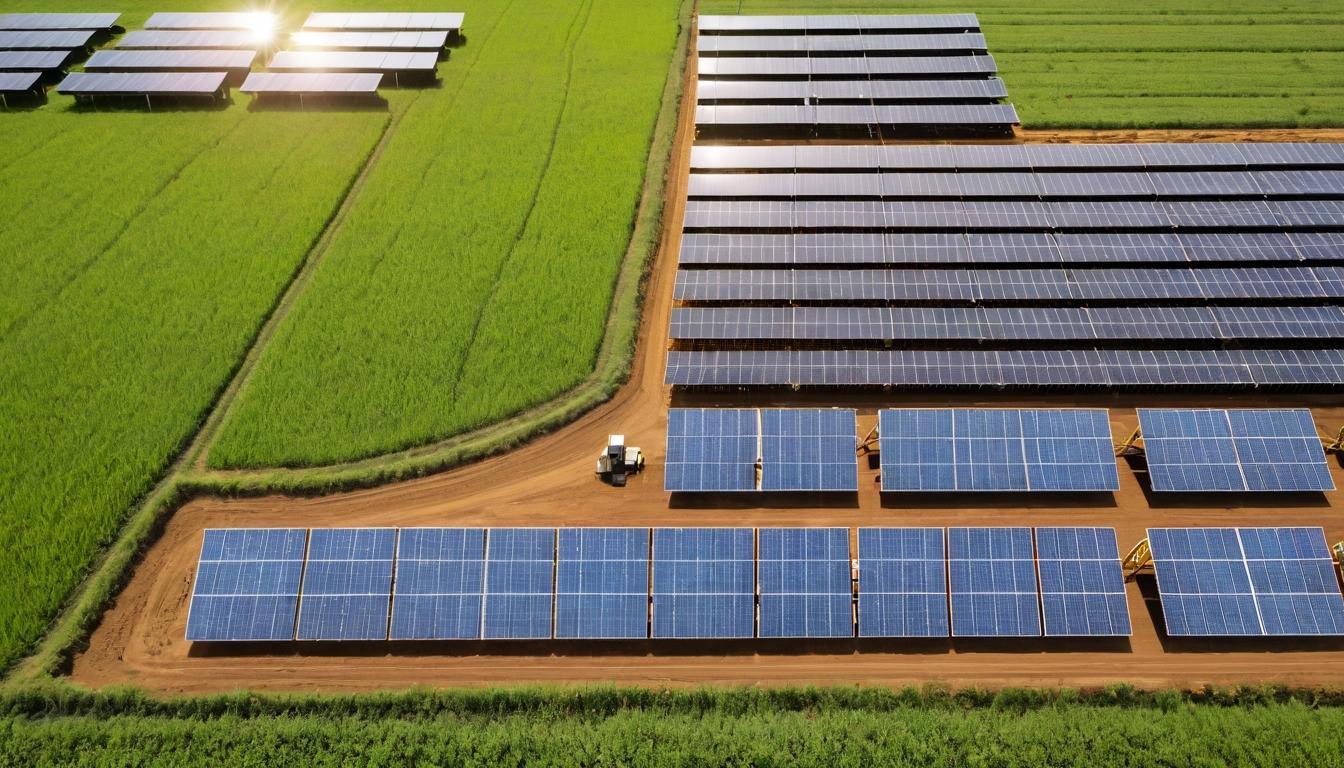Walking through suburban neighborhoods today reveals a subtle but profound shift—rooftops that once stood bare now shimmer with dark blue panels soaking up the sun's energy. This isn't just about cleaner electricity; it's about homeowners taking control of their power destiny, one kilowatt-hour at a time. The solar movement has evolved from niche environmental statement to mainstream economic decision, driven by plummeting costs and rising energy independence aspirations.
Behind this rooftop revolution lies a manufacturing story that reads like a geopolitical thriller. Chinese dominance in solar panel production has reshaped global energy markets, creating both opportunities and vulnerabilities. While China currently produces over 80% of the world's solar panels, new manufacturing facilities are sprouting up in the United States and Europe, fueled by government incentives and supply chain security concerns. The Inflation Reduction Act has unleashed a wave of domestic production investments that could redefine America's position in the clean energy race.
Storage technology represents the missing piece that could finally make solar a 24/7 power solution. Lithium-ion batteries have become the workhorses of residential energy storage, but new chemistries are waiting in the wings. Flow batteries, solid-state technology, and even gravity-based storage systems are competing to solve the intermittency challenge. The real breakthrough isn't just in the laboratory—it's in the falling prices that make battery-backed solar systems accessible to middle-class families.
Community solar projects are democratizing access to clean energy in ways that individual rooftop systems cannot. These shared solar gardens allow renters, apartment dwellers, and homeowners with shaded roofs to participate in the renewable transition. The model has proven particularly powerful in low-income communities, where subscribers can save 10-20% on their electricity bills without any upfront investment. States like New York and Minnesota have become laboratories for scaling these projects, creating blueprints that other regions are now following.
The installation industry itself is undergoing a quiet transformation. What was once a fragmented landscape of local contractors has consolidated into national players with sophisticated sales and financing operations. This professionalization has brought better warranties and more reliable service, but it's also raised concerns about aggressive sales tactics and opaque pricing. Homeowners navigating this new landscape need to become educated consumers, understanding the difference between leases, power purchase agreements, and outright purchases.
Floating solar represents one of the most innovative applications emerging in the sector. By placing panels on reservoirs, lakes, and even coastal waters, developers are solving two problems at once—generating clean electricity while reducing water evaporation. These aquatic arrays can be 10-15% more efficient due to the cooling effect of water, and they don't compete for valuable land. From wine country reservoirs in California to hydroelectric dams in Brazil, floating solar is proving that sometimes the best place for panels isn't on land at all.
Agricultural solar, or agrivoltaics, is creating surprising synergies between farming and energy production. Researchers have discovered that certain crops actually thrive in the partial shade provided by elevated solar arrays. The panels create microclimates that reduce water evaporation and protect plants from extreme heat, while farmers gain a reliable secondary income stream. From blueberries in Massachusetts to sheep grazing in Oregon, these dual-use systems are redefining what's possible on working farmland.
The digital revolution has come to solar in ways most homeowners never see. Behind every modern installation lies sophisticated monitoring software that tracks performance in real-time, detects issues before they become problems, and optimizes energy flows between panels, batteries, and the grid. These platforms are becoming increasingly intelligent, using machine learning to predict energy production based on weather patterns and adjusting home energy usage to maximize savings.
As solar penetration increases, grid integration has become the next great challenge. Utilities are grappling with how to manage millions of distributed energy resources without destabilizing the electrical system. The solutions emerging—from advanced inverters that can provide grid services to virtual power plants that aggregate home systems—represent a fundamental reimagining of how we organize and operate our power networks. This isn't just about adding clean energy; it's about building a smarter, more resilient grid.
Looking ahead, the solar industry faces both enormous opportunities and significant hurdles. Supply chain constraints, trade disputes, and interconnection delays threaten to slow the pace of deployment. Yet technological innovation continues to accelerate, with perovskite solar cells promising higher efficiencies and building-integrated photovoltaics turning entire structures into power generators. The solar revolution that began on rooftops is now expanding to cover parking lots, highways, and even windows—transforming every sunlit surface into a potential power plant.
The most exciting development might be how solar is converging with other technologies. Electric vehicles charged by home solar systems create virtuous cycles of clean transportation and energy. Heat pumps powered by rooftop panels displace fossil fuels for heating and cooling. These integrated systems are showing homeowners that going solar isn't just about electricity bills—it's about building comprehensive energy independence that touches every aspect of modern life.
The solar revolution is quietly transforming how we power our lives




